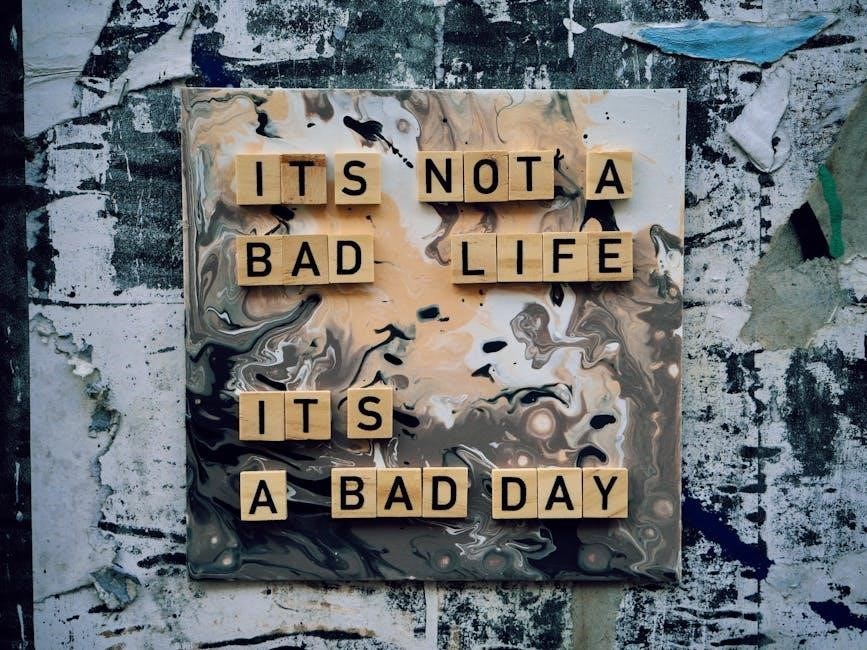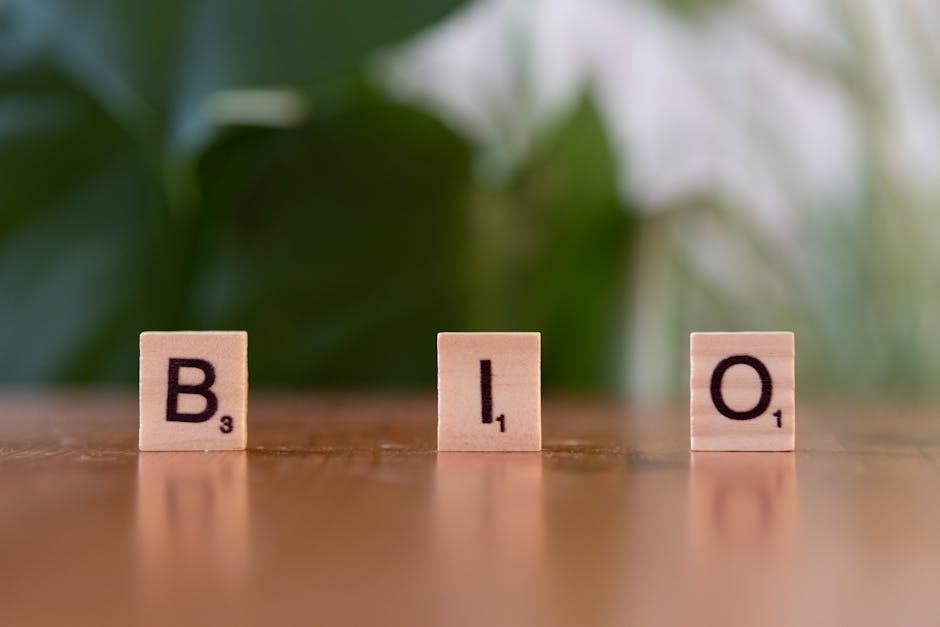The Game of Life is a classic board game simulating life’s journey, offering family-friendly fun for all ages. Players spin a wheel, make choices about careers, marriage, children, and buying houses, while managing finances. The game teaches financial literacy and life planning through unpredictable twists and turns.

Editions of the Game
The Game of Life offers various editions, including the 50th Anniversary Edition, celebrating decades of play with updated features, and the Junior Edition, designed for younger players with simplified rules and fun twists, making it accessible for families and kids of all ages.
50th Anniversary Edition
The 50th Anniversary Edition of The Game of Life celebrates five decades of the beloved board game with updated features and nostalgic elements. This special edition honors the game’s legacy while introducing modern twists to appeal to both longtime fans and new players. It includes refreshed career cards, new life events, and enhanced visuals that reflect contemporary life choices. Players can still enjoy the classic gameplay of spinning the wheel, making financial decisions, and navigating life’s surprises, but with a fresh, modernized design. The edition also includes exclusive content, such as commemorative packaging and retro-style components, making it a collector’s item for enthusiasts. The rules remain largely the same, with players aiming to reach retirement with the most wealth, but the anniversary edition adds unique surprises to keep the game exciting. Whether you’re revisiting childhood memories or introducing the game to a new generation, the 50th Anniversary Edition offers a timeless experience with a celebratory touch.
Junior Edition

The Game of Life Junior Edition is a kid-friendly version of the classic board game, designed for younger players to enjoy. This simplified adaptation introduces children to the concept of life’s journey through fun and engaging gameplay. Players take turns spinning a spinner and moving their car through a colorful, simplified board, making basic decisions about careers, marriage, and having children. The game is designed to be easy to understand, with clear instructions and visual cues to guide young players. The Junior Edition focuses on the excitement of growing up and making choices, without the complex financial management of the original game. It includes kid-friendly career cards, simple money management, and fun life events that teach basic decision-making skills. The game ends when all players reach the “End” space, and the one with the most money is declared the winner. This edition is perfect for introducing children to board games and teaching them about life’s milestones in a playful way. The Junior Edition retains the core essence of the original game but tailors it to suit the understanding and attention span of younger audiences.

Setup and Preparation
Begin by placing the number board beside the gameboard. Choose a banker to manage money and distribute materials. Each player receives a car with a peg and $4,000. Place the career, house, and life cards face down. Insurance policies and bank loans are organized separately. The banker ensures all players start correctly.

Number Board Placement
The number board is placed beside the main gameboard, serving as a central tracking area for players’ progress. Each player selects a car with a pink or blue peg and places it on the “Start Here” space. The banker distributes $4,000 to each player, along with four $500 bills. The number board helps organize the game’s components, such as career cards, house cards, and life cards, which are placed face down at the edge of the board. Insurance policies, including auto and homeowners, are also organized here. Players take turns spinning the wheel, with the highest number starting first. The banker ensures all materials are properly distributed and that the game begins smoothly. The number board’s placement is crucial for easy access during gameplay, allowing players to focus on their journey through life’s stages. This setup ensures a fair and organized start, with all players having equal opportunities to succeed. The clear arrangement of components helps maintain the game’s flow, making it enjoyable for everyone involved.
Selecting the Banker
Selecting the banker is a crucial step in setting up The Game of Life. The banker is responsible for managing the game’s finances, distributing money, and overseeing transactions. Any player can take on this role, but it’s important to choose someone who is organized and trustworthy. The banker begins by organizing the money, career cards, house cards, and life cards, placing them face down at the edge of the board. They also handle the distribution of initial funds, giving each player, including themselves, a car with a pink or blue peg and $4,000 in total, consisting of four $500 bills. The banker ensures that all players start with equal resources and that the game begins fairly. Throughout the game, the banker manages payments, loans, and insurance policies, maintaining the flow of the game. Their role is essential for keeping track of finances and ensuring smooth gameplay. The banker’s responsibilities include handling all monetary transactions, resolving disputes, and providing guidance on rules when needed. This role helps maintain order and fairness, making the game enjoyable for everyone involved.
Initial Money Distribution
At the start of The Game of Life, each player receives an equal amount of money to ensure a fair beginning. The banker distributes $4,000 to each player, which is divided into four $500 bills. This initial money is crucial as it provides players with the resources to make their first decisions, such as buying insurance or purchasing a house. The banker ensures that all players, including themselves, receive the same amount, maintaining fairness. This step is essential for setting up the game, as it gives everyone an equal opportunity to start their journey. The money is placed face up in front of each player, making it easy to manage and track throughout the game. This distribution is a fundamental part of the setup process, allowing players to begin making financial decisions immediately. The banker’s role in handling the initial money distribution ensures that the game starts smoothly and that all players are prepared for the adventures ahead.
Insurance Options

In The Game of Life, insurance options provide players with financial protection against unexpected events. At the beginning of the game, players can choose to purchase Auto Insurance for $10,000. This insurance protects against potential losses from accidents or unforeseen circumstances, ensuring players don’t lose money when landing on certain spaces. The decision to buy insurance is optional but can be beneficial for avoiding financial setbacks later in the game.
Homeowners Insurance is another option available after purchasing a house. This insurance costs $5,000 and safeguards players from potential losses due to bad investments or other risks associated with owning property. Both insurance policies are placed face down during setup and remain in play throughout the game. These options add a layer of strategy, as players must weigh the cost of insurance against the potential risks of going without it. Insurance choices are a key part of managing finances and securing a stable path toward retirement.

Gameplay Mechanics
The Game of Life combines spinning a wheel, moving a car, and following space directions. Landing on spaces triggers actions like paying money, collecting rewards, or drawing cards. Special spaces offer unique challenges or opportunities, adding unpredictability. Players must adapt to life events and manage finances wisely to succeed.
Spinning the Wheel
Spinning the wheel is a central mechanic in The Game of Life, determining how many spaces a player moves. The wheel features numbers from 1 to 10, with 10 being the highest. Each spin dictates the player’s progression along the board. The first player to spin is the one who rolls the highest number during the initial setup. Subsequent turns follow a clockwise order, ensuring everyone gets a fair chance to play. The wheel adds an element of unpredictability, as players cannot control the outcome of their spin. This randomness mirrors real-life uncertainties, making the game both exciting and challenging. Players must adapt their strategies based on the numbers they spin, as higher numbers allow them to reach key spaces like Pay Day or Life Events sooner. Conversely, lower spins may delay progress, emphasizing the importance of strategic decision-making. The wheel’s simplicity belies its crucial role in shaping each player’s journey through the game.
Moving Your Car
Moving your car is a straightforward yet essential part of The Game of Life. After spinning the wheel, players move their car forward by the number of spaces indicated on the spinner. The direction of movement is always forward, following the arrows on the board, as you cannot move backward in the game; If you land on a space that is already occupied by another player, you must move ahead to the next available open space. This rule ensures that no two players can stay on the same space, keeping the game dynamic and fair. The car must always follow the path laid out by the board’s design, and players cannot deviate from the arrows’ direction. Movement is continuous, and you must complete your move before resolving any actions associated with the space you land on. If you spin a number that would take you past the “Retire” space, you stop moving once you reach it, as this signals the end of your journey. The car’s movement is a key mechanic that drives the game’s progression, ensuring that players experience the ups and downs of life’s journey in a structured and engaging way.
Landing on Spaces
Landing on spaces in The Game of Life determines the actions players must take during their turn. Each space on the board has specific instructions that guide gameplay, ensuring a dynamic and unpredictable experience. When a player lands on a space, they must follow the directions provided, whether it involves paying money, receiving funds, or making life choices. Red spaces, for instance, often signify major life events such as getting married, buying a house, or having children, and require players to draw corresponding cards and follow the instructions. Career spaces are marked with symbols of specific careers and dictate payments to the player holding the matching Career card. If no one holds the card, the payment goes to the bank. Other spaces, like the “Spin Again” or “Family” spaces, allow players to spin the wheel again or add baby pegs to their car, respectively. Some spaces offer choices, such as the “Risky/Safe” path, where players can opt for a riskier route with potential for higher rewards or losses, or a safer path with more predictable outcomes. Landing on spaces is a core mechanic that drives the game’s progression and ensures that each player’s journey is unique and engaging. The variety of spaces keeps the game exciting and reflects the unpredictability of real-life decisions and events.
Following Space Directions

Following the directions on each space is crucial in The Game of Life, as it dictates the flow of gameplay and the decisions players must make. When a player lands on a space, they must immediately follow the instructions provided. For example, Career spaces require players to pay the owner of the corresponding Career card, while LIFE spaces involve drawing LIFE tiles, which can be stolen by other players under certain conditions. Spin Again spaces allow players to spin the wheel a second time and move accordingly, adding an element of unpredictability. Family spaces instruct players to add baby pegs to their car, simulating the growth of a family. Risky/Safe spaces offer a choice between two paths, with the Risky path potentially leading to significant gains or losses, while the Safe path provides more predictable outcomes. Players must also adhere to the rules of spaces like Change Career, which allows them to draw a new Career card, or spaces that require paying taxes or collecting bonuses. Each space’s instructions are designed to mirror real-life decisions, making the game both engaging and educational. By following these directions, players experience the ups and downs of life’s journey, ensuring every game is unique and full of surprises.

Special Spaces
Special spaces in The Game of Life add excitement and unpredictability to the gameplay. These spaces are designed to simulate real-life events and decisions, making the game dynamic and engaging. Career spaces, for instance, require players to pay the owner of the corresponding Career card, while LIFE spaces involve drawing LIFE tiles, which can be stolen by other players if the bank runs out. Spin Again spaces allow players to spin the wheel a second time, adding an element of unpredictability to their move. Family spaces instruct players to add baby pegs to their car, simulating the growth of a family. Risky/Safe spaces offer a choice between two paths: the Risky path can lead to significant gains or losses, while the Safe path provides more predictable outcomes. Change Career spaces allow players to draw a new Career card, giving them a fresh start. These special spaces are integral to the game’s design, as they introduce unexpected twists and turns, ensuring that no two games are alike. By incorporating these unique elements, the game captures the unpredictability of real life, making it both entertaining and educational for players of all ages.

Life Events in the Game
Life events in the Game of Life include milestones like getting married, buying a house, and having children. These events are triggered by landing on specific spaces, requiring players to spin, draw cards, or add family pegs. They add realism and excitement to the game, simulating life’s key moments.
Getting Married
Getting married in the Game of Life is a significant event that adds excitement and financial considerations to gameplay. When a player lands on a Getting Married space, they must follow the instructions provided on the space. Typically, this involves paying the bank a specified amount of money, reflecting the costs associated with marriage in real life. The exact amount varies depending on the edition of the game, but it is usually a substantial payment that impacts the player’s finances.
In some versions, the marriage event may also involve interactions with other players. For example, if another player holds a specific Career Card, the player getting married might need to pay them instead of the bank. This adds a layer of strategy and unpredictability to the game. Marriage is one of the key life events that make the Game of Life engaging and relatable, as it simulates real-life decisions and their financial consequences.
After getting married, the player continues their journey on the board, facing new challenges and opportunities. The marriage event is a memorable milestone in the game, often leading to further life events like having children or buying a house. It emphasizes the game’s theme of navigating life’s ups and downs while managing resources effectively.
Buying a House
Buying a house in the Game of Life is a significant financial decision that adds depth to the gameplay. When a player lands on a Buy a House space, they are required to draw two House cards from the deck. The player then selects one card to purchase and pays the specified amount to the bank. The other card is returned to the deck face down. This mechanic introduces an element of choice and strategy, as players must decide which house to buy based on its cost and potential benefits.
Owning multiple houses is allowed, and each purchase impacts the player’s financial standing. The cost of a house can be a substantial expense, but it also serves as an investment that may pay off later in the game. Players must carefully manage their funds to afford the purchase, as running out of money can lead to borrowing from the bank or other players.
The process of buying a house is straightforward but meaningful, as it reflects real-life financial decisions. Players must balance spending on houses with other expenses, such as paying for children or dealing with unexpected life events. This adds a layer of realism and challenge to the game, making it engaging for players of all ages.
Having Children
Having children in the Game of Life adds a fun and unpredictable element to the gameplay. When a player lands on a space with a Spin for Babies instruction, they must spin the spinner to determine how many children they will have. The number spun corresponds to the number of people pegs that are added to the player’s car. Each peg represents a child, and having more children can lead to additional expenses throughout the game.
After spinning and adding the pegs, the player spins again and moves their car forward. This mechanic simulates the unexpected nature of life events, where having children can bring joy but also financial responsibilities. Players must manage their money carefully, as raising children can lead to increased costs, such as paying for their education or other related expenses.
The game also offers an optional path for players who wish to avoid having children. By choosing the Family path, players can bypass the Spin for Babies space and continue moving along the board. This adds a layer of strategy, as players must decide whether the potential benefits of having children outweigh the financial burdens.
Overall, having children in the Game of Life is a charming and engaging feature that reflects real-life decisions and challenges. It adds depth to the gameplay and encourages players to think strategically about their financial choices.
